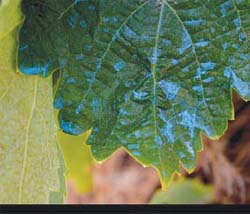Choosing the Right Herbicides

What’s one of the keys to effective weed control? Choosing the right herbicide, of course. And ideally, that means using the best product available for each of the weeds you plan to tackle in your fields. While it can be tempting to choose the cheaper option, such as a generic product, it might not be the best choice for maximizing efficacy to control weeds.
Choosing the right herbicides
Choosing the right herbicides is all about finding the product that is the best fit for your operation. To find the right products for your operation, first ask yourself the following three questions:
1. What are the weed species I am trying to control?
Identifying the problem weeds in your field is the first step to finding the right herbicide for your operation. Choose herbicides with active ingredients that are effective against these specific problem weeds.
2. What are the soil characteristics of the field?
When selecting an herbicide, soil type, pH and organic matter content are all important characteristics to minimize crop injury and carryover to subsequent crops.
3. What is my end goal?
Select an herbicide based on what you want to accomplish, whether it is prevention or elimination of weeds, or both.
Not all herbicides are created equal
Is there a big difference between active ingredients in original vs. a generic herbicide? Typically, no. However, how the products are manufactured is what really separates the two by affecting quality and performance.
Overall, originals and generics differ in five key ways.
1. Different surfactant package
While generics and brand name products may contain the same active ingredients, they are not required to have the same surfactant package. Such differences can influence how well an herbicide sticks to the leaf surface and can make a difference in the performance of the herbicide.
2. Different molecular arrangements
The physical form of the active ingredient can also vary between generic and brand name products. Isomers, or different molecular structures of the ingredients, may exist between different products. Some arrangements will fit the binding site on the plant better than others, which can affect efficacy.
3. Different application rates
Application rates may also vary between brand name and generic herbicides. Depending on the formulation, you may need to add more of a generic product to get the same rate of the active ingredient that the brand name product provides.
4. Different acid equivalencies
A generic product may also have lower acid equivalencies than a brand name product. Acid equivalency (A.E.) is a measure of herbicide efficacy. Products with lower A.E. require higher use rates to get the same amount of acid equivalent per acre.
Branded herbicides provide a trust and comfort level over generics.
Three Benefits of Selecting a Residual Herbicide to Control Weeds at Planting
After planting, there is one sight every grower dreads to see—weeds. It can be especially troubling when young weeds are visible before the crop even has emerged. These early season weeds pose one of the greatest threats to corn plants. If left unmanaged, they will compete with corn for sunlight, water and nutrients, often resulting in reduced yields and lower profits. However, as dreadful as weeds can be, there are strategies you can take to mitigate their effects. In fact, before you even see a weed, you can take steps to ensure that corn plants grow without unnecessary competition and yield losses.
One of the most promising ways to eliminate early season weed competition is by applying a pre-emergence herbicide with strong residual control.
Three benefits of selecting a pre-emergence herbicide with residual
Pre-emergence, residual herbicides take out weeds before the crop emerges from the ground. While important, this is only one part of the picture. Of course, the initial control of emerged weeds is very important. But in order to keep those weeds at bay throughout the season, you really need an herbicide that not only controls weeds, but provides powerful residual too. This gives you a strong foundation for a solid integrated weed management program. The benefits of preemergence herbicide applications can be felt not only early in the season, but also later in the season and in future growing seasons as well.
1. Minimizes weed-related yield losses
Early season weeds pose the greatest threat to yield. Managing weeds with a pre-emergence herbicide takes out tough weeds before they can compete with corn. Competition often results in improper development, with the corn plants growing taller rather that developing a solid root system that will allow for maximum grain fill. Availability of ample resources allows corn plants to develop fully and properly. Therefore, less competition from weeds minimizes the risk of reduced yields.
2. Builds a foundation for weed control later in the season
Applying a residual herbicide at time of planting can build the foundation for season-long weed control. Most residual herbicides remain active in the soil for a few weeks, so this extends the window for a postemergence application. When early season weeds are controlled by a pre-emergence herbicide with residual, there is less pressure on the postemergence herbicide application to take out all weeds that might have emerged since the beginning of the season.
3. Mitigates the development of herbicide resistance
As part of a two-pass system, a pre-emergence herbicide application can also mitigate the development of herbicide resistant weeds. It is recommended to incorporate multiple and different effective sites of action into the tankmix. With this approach, weeds are targeted in multiple ways for early season weed control. When weeds are successfully managed at time of planting, the risk of developing herbicide resistance is reduced considerably